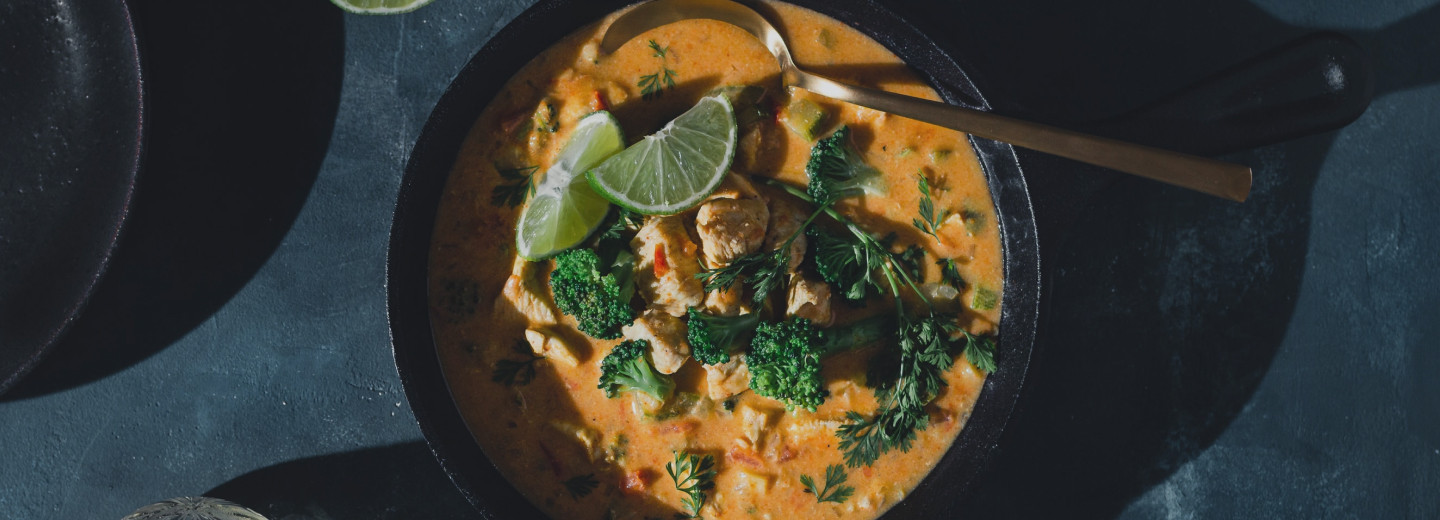
Thailand's cuisine is known for its exotic aromas, freshness, and rich spices. Thailand's neighbors' culinary traditions and cooking, especially India, Cambodia, Malaysia, and Indonesia, have been influenced by one another for centuries. David Thompson, an expert on Thai food, observes that, unlike many other cuisines, Thai cooking is about juggling disparate elements to create a harmonious finish. It has to have a smooth surface like a complex musical chord, but it doesn't matter what's happening underneath.
Explore the sensations of the Land of White Elephants by eating on our selection of the best foods this culinary nation has to offer.
It was created in the 1930s in Thailand by Plaek Phibunsongkhram, the prime minister. He made the dish because Thailand was focused on nation-building. So he created this dish using Chinese noodles and called it Pad Thai to galvanize nationalism.
Pad Thai is a Thai noodle stir fry with a sweet-savory sour sauce scattered with crushed peanuts. It consists of thin or broad rice noodles stir-fried with fresh prawns, crisp bean sprouts, eggs, delectable tofu cubes, onion, and finely shredded peanuts. Last but not least, a squirt of lime juice to complete the dish.
Tom yum soup is a sour Thai soup, and it is usually cooked with shrimp. The words Tom Yum mean "boiling" or "hot" and "spicy and sour," which perfectly describes this soup. It combines fragrant lemongrass, kaffir lime leaves, shallots, lime juice, fish sauce, fresh chilies (chili paste), and fat juicy prawns.
Tom Yum Goong's origins are unknown. However, it is a Thai soup that originated in Central Thailand, where fresh shrimp is abundant in the Chao Phraya River.
Thailand's delectable national food hails from the north and is influenced by neighboring Laos. Tom Kha Gai translates to Chicken Soup with Galangal, Tom means Soup, Kha means galangal, and Gai means chicken. Tom Kha Kai has spices such as galangal, shallots, lemongrass, and kaffir lime leaves, which set the essential flavor of the soup. Chilies are optional.
There are other versions of Tom Kha: made with seafood (Tom Kha Thale), mushrooms (Tom Kha Het), pork (Tom Kha Mu), and tofu (Tom Kha Taohu).
In the late 19th century, Tom Kha was a chicken breast or duck meal cooked in a mild coconut broth with plenty of galangals. It was paired with a simple roasted chili jam as a dipping relish.
Khao pad means "stir-fried rice.". The ingredients include rice, egg, garlic, onion, and a form of protein, such as chicken, shrimps, crabmeat, or beef. It can be found in various places, including street stalls, marketplaces, and high-end restaurants.
For the Thai, Khao Pad is an ideal lunch food. The dish is then plated and served with accompaniments like cucumber slices, tomato slices, lime, and sprigs of green onion and coriander, etc.
The Gaeng Daeng (Red Curry) is a Thai meal made with milk-infused red curry paste. Various fresh or dried red Asian chilies are crushed with garlic, shallots, blue ginger, and lemongrass. Thai Curry can be varied with pork, chicken, duck, shrimp, or tofu as the main ingredient and is often served with steamed rice or buns. It is best when served warm.
In Thailand, the dish is called Khao Neow (sticky rice) Mamuang (mango). Mango Sticky Rice is a classic Thai delicacy made with glutinous rice, fresh mango slices, palm sugar, and coconut milk. Steamed sticky rice is blended with thick coconut cream and sugar, then served with perfectly ripe yellow sweet mango and extra coconut cream on top. Finally, crunchy yellow mung beans are sprinkled on top.
It is consumed throughout the Indochina region of Southeast Asia, including Laos, Cambodia, and Vietnam, despite its origins in Thailand.